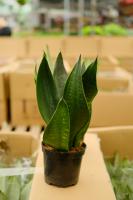Introduction
Water treatment plants play a crucial role in ensuring that clean and safe water is available to homes and industries. These facilities are responsible for removing impurities, chemicals, and contaminants from the water to make it safe for human consumption. However, the process of purifying water generates a byproduct known as sludge, which needs to be disposed of effectively. In this article, we will explore the ways in which water treatment plants manage sludge.
What is sludge?
Sludge is a semi-solid, often viscous substance that settles at the bottom of tanks and chambers during the water treatment process. It is a mixture of organic and inorganic materials such as human waste, bacteria, dirt, and chemicals. Sludge can be difficult to handle, and if not disposed of properly, it can pose significant threats to human health and the environment.
Why is sludge a problem?
Sludge is a hazardous substance that can cause harm to humans and the environment. It is rich in pathogens, heavy metals, and other substances that can contaminate groundwater and surface water. Sludge also emits an unpleasant smell that can make the surrounding environment uninhabitable. Additionally, sludge can breed disease-causing organisms that can cause health problems for humans and animals alike. Therefore, it is essential to dispose of sludge effectively.
How do water treatment plants dispose of sludge?
Water treatment plants use different methods to dispose of sludge, depending on the type and quantity of sludge generated as well as the available resources. Here are the common sludge disposal methods used by water treatment plants:
Land application
Land application involves spreading the sludge on crops, forests, or other land areas. This method is suitable for sludge that contains organic matter that can be used as a fertilizer. The sludge is treated and stabilized to reduce pathogens and harmful chemicals before it is spread. This method reduces the need for chemical fertilizers and mitigates soil erosion. However, care must be taken to avoid contaminating the soil and surrounding water sources.
Incineration
Incineration involves burning the sludge in high-temperature ovens to reduce it to ash. This method is ideal for sludge that is heavily contaminated with hazardous chemicals and pathogens. After incineration, the ash can be safely disposed of in landfills, and the heat generated can be used for energy generation. However, incineration can be expensive, and it generates air pollution, which must be managed effectively.
Composting
Composting involves mixing the sludge with other organic materials such as straw, leaves, and food waste to create a nutrient-rich fertilizer. The mixture is then placed in piles or bins and allowed to decompose before being applied to land. This method reduces the volume of sludge and converts it into an environmentally-friendly product. Composting is a low-cost disposal method that is suitable for small-scale water treatment plants.
Dumping at sea
Dumping sludge at sea involves discharging it into water bodies such as lakes, rivers or the ocean. This method is not recommended as it can lead to contamination of marine life, water bodies and harm local communities. Though it is cheap, it poses great danger to the environment and human health.
Conclusion
Water treatment plants play a critical role in ensuring the availability of clean and safe water for human consumption. However, they generate sludge, a hazardous byproduct that needs to be disposed of safely. There are several methods for disposing of sludge, each with its advantages and disadvantages, and water treatment plants choose the most appropriate method based on their unique circumstances. By disposing of sludge efficiently, water treatment plants can reduce the hazards associated with sewage treatment and protect human health and the environment.

 how many times do yo...
how many times do yo... how many planted tre...
how many planted tre... how many pine trees ...
how many pine trees ... how many pecan trees...
how many pecan trees... how many plants comp...
how many plants comp... how many plants can ...
how many plants can ... how many plants and ...
how many plants and ... how many pepper plan...
how many pepper plan...































